Parsley is the New Kale: A day with a local Sonoma County farmer
“You’ll come through Bloomfield and approach Valley Ford. Turn right off the main road, continue up the hill and then down, and you’ll see the kale before you see me,” instructed Jesse Pizzitola, head farmer of First Light Farm, as I drove out to his fields for our interview on a sun-filled January afternoon. And it was true; the gorgeous kale was hard to miss.
First Light Farm grows certified-organic produce on 20 acres, split between two properties in Petaluma and Valley Ford. The difference between these two climates is astounding. The Petaluma parcel on Bodega Ave, which also houses the farm’s beautiful farm-stand and pick-your-own flower garden, receives enough heat to grow tasty hot-weather crops such as tomatoes and peppers. In the cooler, foggier Valley Ford, First Light can grow kale and other greens that remain tender and sweet year-round.
Between selling their produce through three different farmers markets, a farm-stand, a 112 member CSA (Community Supported Agriculture), and up to 10 markets and distributors throughout the Bay Area, it’s safe to say they’ve got a lot going on. And not to mention they’re gettin’ it done with just a team of 5 – 8, depending on time of year.
Jesse, who owns the business along with his wife Lisa, has been farming for over 15 years, and 2015 will be his 5th season at First Light Farm. I consider Jesse a great friend and an invaluable mentor, so you can only imagine how excited I was to sit down and ask him all my burning questions, all ‘on the record’.
Lennie Larkin: Jesse, I’m going to first ask you about soil, because in my mind what could be more important? What do you have to say about the soil quality here at First Light Farm?
“The soil here on this piece of land in Valley Ford is very different from the soil in Petaluma. Here it’s beautiful soil, really fertile. The land we lease here is on a goat dairy so we actually collect all of that goat manure, combine it with straw bedding, and make about 300 yards of compost every year. This finished compost doesn’t leave the Valley Ford property, and is spread over the 10 acres. So that is pretty much the only fertility we put into the soil out here – besides performing the standard soil tests every year and adding a few amendments to fix any major deficiencies and balance pH.”
“We also rely heavily on winter cover crops and are working towards incorporating more summer cover crops (such as buckwheat and sudan grass) into our field rotations. The winter cover crop is great out here because even last year when it didn’t rain we didn’t need to use supplemental irrigation.”
That’s a lot of compost. I’m trying to picture what that looks like on 10 acres. How thick of a layer does that give you?
“Well, it’s still not at the level of a home gardener who, in a small space, can add inches of compost to their beds and make beautiful soil rather quickly. But it’s a lot for sure. It comes out to about…”
Jesse performs quick mental math while I pretend to follow along by repeating his numbers out loud.
“…a ¼ inch over the ten acres. But that’s not in fact how it works – we spread way more on areas that need it. It works really well for us and is a great source of slow-releasing nutrients that build the soil over time.”
Beautiful. Now let’s move on to organic pest control, a topic as relevant to us farmers as it is to all the home gardeners out there. What pest problems do you face on your properties, and what solutions have you found?
“Aphids were bad this year, especially on the kale, in part due to stress from lack of rain. We occasionally spray with neem oil and safer soap which works pretty well for us. I think a major component of natural pest control is to make sure you’re planting your crops at the appropriate time of year, making sure they’re watered sufficiently, and planting crops that attract predatory and beneficial insects.”
“This year, for example, I’m going to plant rows of alyssum out in the fields between the kale to attract predatory wasps. This practice is almost an industry standard at this point – some of the bigger farms will plant a row between every 7 rows of kale.”
I start to scribble frantically in my margins: ‘Note to self! Buy more sweet alyssum seed!’
Thanks for the tip! What major hurdles do you encounter on the farm?
“Germination with direct seeding, especially in sandy soil. We have a tough time with carrots, for example – it’s just hard to keep the soil consistently moist to get good germination rates.”
Speaking of water stress, in this drought, have you had to figure out ways to conserve water or change your systems?
“Well, we’re really water conscious to begin with. About half of our acreage is never watered anyway. We almost specialize in great dry-farmed potatoes and, increasingly, winter squash. What we do water is on drip tape, which does pretty well at conserving water.”
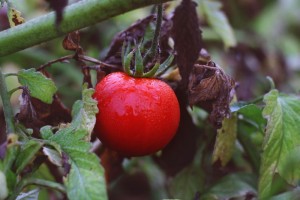
That’s awesome! So, walk us through a day in the life of farmer Jesse.
“Well, I suppose let’s focus on a typical sales day, which occurs twice a week. Two days prior I send out an availability list to our buyers – up to 10 of them. Fast forward to sales days when I start getting orders from them via text at 6am. The crew starts working at 7, mostly bunching kale as that takes the longest and comprises the bulk of our harvest. I will either shoot the guys a text with the arriving orders, or head out to meet them in the fields to relay the information in person.”
“The orders will keep rolling in until 10am and I will try to manage those, keeping in mind what manpower we have on that particular day and what vegetables we have out in the field. And then as soon as 10am hits, I’m basically out in the field, jumping in where needed.”
So once you’re out in the field, how does the crew manage the harvest?
“Well we’re all familiar with the paradigm of the ‘well-oiled machine’. We have a great crew, and we’ve got our systems down, so this notion applies and in a way is what we’re always striving for, but I’m trying to move beyond the comparison to industrialized agriculture. I think of us more as an organism, a really healthy human body. It’s a fluid, responsive thing, with a strong heartbeat, nerve sensations running back and forth.”
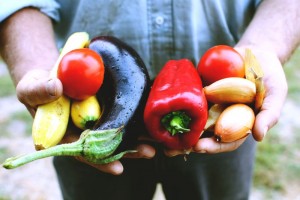
I think that’s a great analogy. So what happens after you collect orders and what does a typical order look like?
“Most of the day is really spent harvesting and processing, and then my afternoons are all about delivery, tagging and labeling, and writing invoices.”
“With kale, which is a huge crop for us, we send out up to 60 boxes a day. Altogether, one harvest will look like two very full pickup trucks. We usually end up with 4-5 orders each day.”
That’s a lot of kale. What are your favorite crops? And what would you suggest that home gardeners grow this year?
“We do really well with potatoes, kale, tomatoes, parsley, and lettuce. Between the two plots of land we are allowed such great diversity for the CSA. But a favorite crop? Let’s see. It changes every year…..actually, parsley! Bugs don’t like it, it keeps growing for a long time so you can harvest off of it all season, it doesn’t attract much disease, and it doesn’t really go bad in the field. We grew ¼ acre of it and it was of huge importance to our sales for the season. And, well, parsley is just great! It’s a super food!”
Really? A super food?
“I think parsley is the next kale.”
We both laugh for about five minutes, I propose the next bumper sticker, and then Jesse gets back to explaining the importance of parsley for farmers and home gardeners alike.
“It’s just as nutritious. It should really be eaten like a vegetable rather than a garnish. We make parsley pesto and it’s delicious. Home gardeners should always grow lots of parsley, along with other long-season crops that you can keep picking off of for months: kale, de ciccio broccoli, plants you can take a few leaves from at a time.”
You heard it here first folks – grow more parsley! Ok Jesse, moving away from your plans to turn garnishes into vegetables, why are you drawn to the CSA model?
I think that the CSA model opens up a radically different relationship between the consumer and the producer. Things like farmers markets and advances in the local food movement are really powerful, but I think the CSA movement pushes all that into a vital next step, one in which consumers aren’t going from stall to stall to see whose carrots are the cheapest. They are deciding to really truly support one farm. They not only get their food from there, but they also know about the economics of it, they know what’s going on with their farmer, and what kind of decisions the farmer is making, and maybe they are even involved in those decisions in an ideal CSA model.
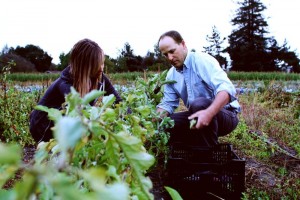
So it would be a more interactive buying experience?
“Yes. And we’re moving towards a goal, and my ideal CSA is probably that goal. I think we need a much bigger buy-in from consumers and that they have so much to gain from a stronger relationship to farmers and their farms. The community as a whole benefits from having stronger relationships with their local farms.”
And there you have it, straight from the mouth of a great local Sonoma County farmer. If you haven’t been out to First Light Farm, it’s worth a visit! Their Farm store is open everyday of the week, mid-June through October. Additionally, in a collaboration with Chica Bloom Farm, they are in the beginning stages of building an on-site community gathering and on-farm educational space, Seed n’ Soil.
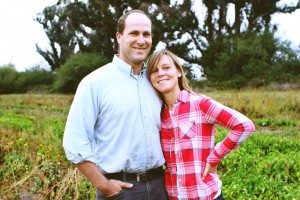
Visit Your Local Sonoma County Farms:
- Petaluma Bounty is a non-profit educational farm in downtown Petaluma, offers volunteer and community projects where the whole family can get their hands dirty.
- Singing Frogs Farm in Sebastopol is well-known for it’s gorgeous produce and unique (in today’s world) no-till system. They host on-farm tours and events throughout the year.
- B-Side Farm is Penngrove’s newest flower farm-ette, producing old-fashioned blooms with sustainable practices, and run by yours truly.
- Shone Farm, part of Santa Rosa Junior College, is a thriving, diverse operation that hosts many in-depth educational opportunities.
Additional Resources:
Kitchen Table Advisers made a beautiful video of Jesse doing his thing and speaking eloquently on the visceral experience that helped him find his place in the world as a farmer.
And gardeners don’t forget that we’ve blogged about both cover-cropping and making your own compost at home. Click the links below and discover how you can incorporate essential farming techniques in your home garden.
Growing Cover Crops in Your Garden
Making Compost at Home in 10 Easy Steps
If you have a favorite local farm that we didn’t list, post it in the comment section below!







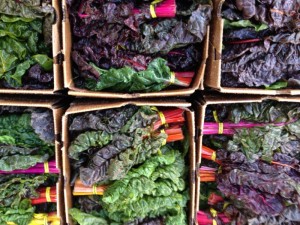
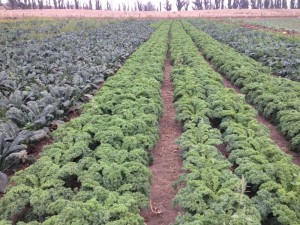
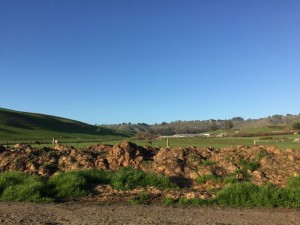
 Family
Family

